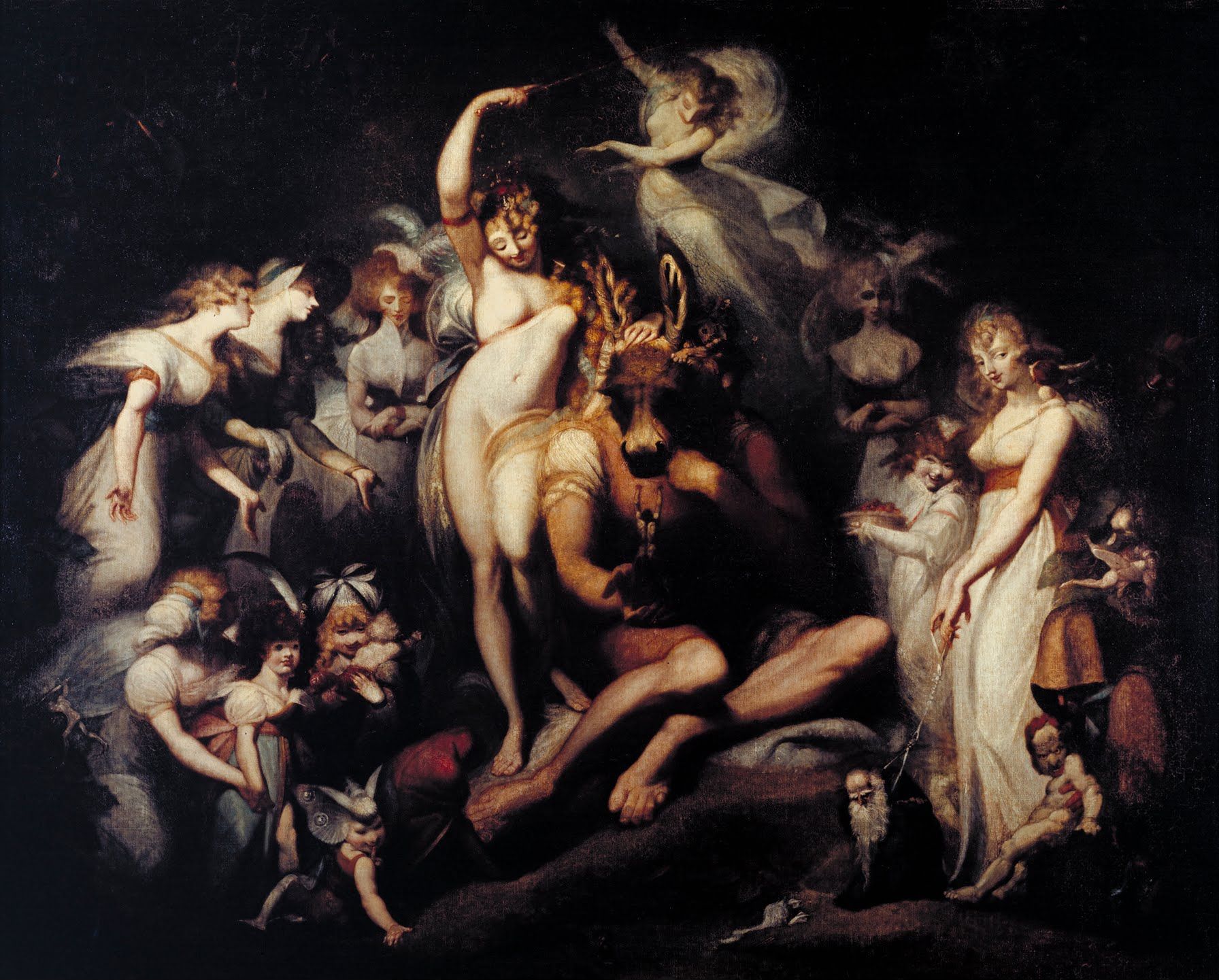Friday Art Find: Titania and Bottom

During the Enlightenment, a time of over-idealized rationality, Fuseli painted fantasies that sought to reveal deeper truths.
This scene inspired by Shakespeare's A Midsummer Night's Dream shows Queen of the Fey Titania enchanted by a potion her husband has deployed against her for her "pride." Under this spell, she falls in love with Bottom, a weaver who is under another spell that has turned his head into that of an ass. She gathers her faeries around them.
The pride that she is punished for is refusing to relinquish to her husband a child whom she has pledged to care for after the death of the child's mother, a friend of Titania. This becomes a painting about misrepresentations in the patriarchal narratives we are told and retell, and the truth that is present beneath the surface.
Intentionally referencing past works in the cultural lexicon and social consciousness, Fuseli bases Titania's pose on da Vinci's Leda and the Swan. The latter's painting depicts the scene of rape as Leda sensually presenting herself to the swan. Two of the fairies in Fuseli's painting are inspired by Botticelli's illustrations for Canto XXX from Dante's Paradiso. Beatriz offers Dante divine love but he seeks the ranks of heaven instead. A girl with a butterfly head is styled after a type of naturalistic child portrait developed by Joshua Reynolds, superimposing the fantastic and realistic.
Through the tension between these elements that Fuseli has extracted, mixed, and distilled into the painting, a new meaning is produced, one that points to misrepresentations embedded in our cultural history and in the direction of truth.

